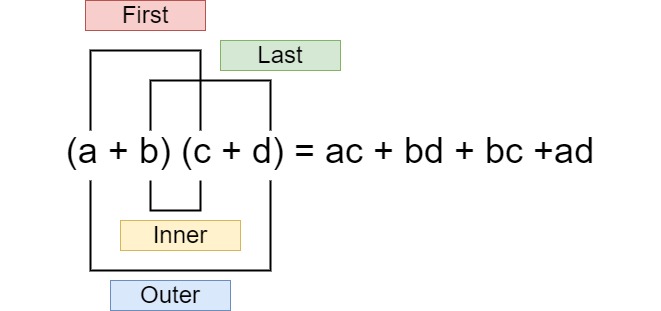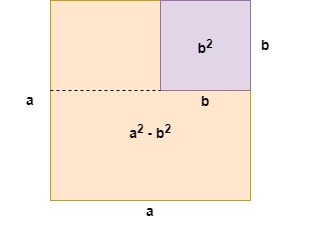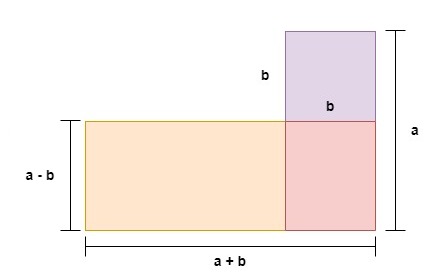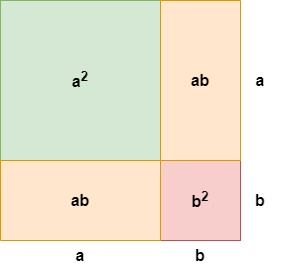A special product is a product of two binomials that hold a predictable pattern.
Before we dive into this topic, let us do a quick recap on the FOIL method and its application towards multiplying binomials.
Recap on the FOIL Method
As we have seen before, we can use the FOIL method to multiply binomials. Now let us refresh our memory! The formula for the FOIL method is as follows:

Now consider the following examples.
Use the FOIL method to find the products of the expressions below.
Do you see any patterns when you expand these expressions?
Notice that in Questions 1 and 2, the middle term disappears when we have the product of the sum and difference of the two terms. In Questions 3, 4, 5 and 6, the middle term is twice the product of the terms in the binomial.
These patterns are examples of special products. These types of products do not require long workings when solving them as they have specific rules we can follow. Shortcuts like these always come in handy! Using special products can help us expand and factorize polynomials in a more efficient way by recognizing the pattern each method holds. Here are our learning objectives for this topic.
Identifying patterns found in special products
Using these patterns to expand and factor polynomials
Solve polynomials via these factoring methods
In the next segment, we shall look at each type of pattern in turn. We will be introduced to three types, namely
Difference between two squares
Perfect square trinomials
Sum and difference of two cubes
From there, we shall use these methods to solve polynomials as we did in the previous section.
Sum and Difference Formula
The general formula for the sum and difference of two terms is
.
The pattern gives us the difference between the two squares.
Geometrical Representation
Now, the statement above may sound somewhat confusing. To help us understand what this means, let us try to visualize this pattern geometrically. Observe the square below.

Here, the large square has an area of and the purple square has an area of . Thus, the area of the orange region is the area of the large square minus the area of the purple square, . We have thus proven the right-hand side of the sum and difference formula.
To show the result of the left-hand side, we first draw a dotted horizontal line as shown in the diagram above. This creates a segment that separates the orange region into two rectangles. We will then move this new segment to the left-hand side as displayed below. For a clearer view, this new segment is represented by the colour red.

We now have to find the area of the orange region and the area of the red region. Here, we see that the horizontal length of these two regions is while the vertical length is . Thus, the combined area of the orange and red rectangle is , which satisfies the left-hand side of the sum and difference formula.
Worked Examples
Let us look at the following worked examples.
Expand the following terms.
Solutions
1. Here, a = 5x and b = 4, so
2. Here, a = 3x and b = 7, so
Factorize the following expressions.
Solutions
1. Since
Then
2. Since
Then
Note that you cannot factorize the sum of two squares, that is, a2 + b2. You can try doing so with the following example: 9x2 + 16. You will notice that it is impossible to factorize this expression.
Therefore, the difference between two squares can be factorized as the sum and difference of two terms. Now, let us use this pattern to solve polynomials. To find the solutions of a polynomial, we shall set the equation to zero and apply the Zero Product Property as seen in the lesson, Factoring Polynomials.
Recall that the Zero Product Property states that if a x b = 0, then a = 0 or b = 0 (or both a = 0, b = 0).
We shall return to the last two examples to show this.
Solve
Solutions
1. We obtained that and . Thus, we have two distinct real roots:
2. We found that and . Thus, we have two distinct real roots:
Square of a Binomial Pattern
The square of a binomial can take on two cases
In both scenarios, the middle term is twice the product of the terms in the binomial. However, in Case 1, we have a positive term while in Case 2, we have a negative term. For these cases, the pattern yields a perfect square trinomial.
Geometrical Representation
So what does this mean geometrically speaking? For clarity, let us define the following terms.
A perfect square is an integer that is a square of an integer. For instance, and so on.
A trinomial is a polynomial of three terms.
A binomial is a polynomial of two terms.
A perfect square trinomial is a trinomial that can be written as a square of a binomial such as the two cases above.
Now, observe the following square.

Looking at the diagram above, we can see that the large square has an area of . This is made up of the area of the red and green squares and the area of the two identical orange rectangles. Adding these up, we obtain . Thus, we have deduced the first case.
The same concept follows in the second case. In this case, we only want the area of the green square and the area of the red square which is . Here, we are essentially subtracting the area of the two identical orange rectangles from the area of the green and red squares as . Factorizing the left-hand side of this equation via grouping, we obtain
as required.
Worked Examples
When factoring polynomials that may show this pattern, remember to check the middle term to ensure that it meets the criteria of Cases 1 or 2. Here are some worked examples for this pattern.
Expand the following terms.
Solutions
1. Here, and , so
2. Here, and , so
Factorize the following expressions.
Solutions
1. Since
So
Therefore,
2. Since
So
Therefore,
Thus, we can factorize a perfect square trinomial by the square of a binomial. Again, let us use this pattern to solve some polynomials. For simplicity, we shall return to our last two examples to show this.
Solve
Solutions
1. We obtained that . Thus, we have one solution that is a repeated real root:
2. We obtained that . Thus, we have one solution that is a repeated real root:
Sum and Difference of Two Cubes
To factorize the sum of two cubes, we can do so by applying the general formula below:
.
Here are some worked examples to demonstrate this:
Factorize the following expressions.
Solutions
1. Here
Factorizing this gives
2. Here
Factorizing this yields
As for factorizing the difference between two cubes, we can use the following general formula:
.
Let us go through some worked examples for this pattern:
Factorize the following expressions.
Solutions
1. Here,
Hence, the factorized form is
2. Here,
Hence, the factorized form is
Tip: It may be helpful to identify your a and b terms before factorizing such expressions to avoid confusion.
With that, we now know how to factorize the sum and difference of two cubes. Once more, we shall attempt to solve polynomials using this method. In this case, notice that we have a binomial expression and quadratic trinomial when we factorize both the sum and difference of cubes.
To determine the solution from the binomial expression is indeed straightforward. However, this is not the case for the quadratic trinomial. Here, the quadratic trinomial can no longer be factorized into products of two binomials, that is, . Thus, we must use the quadratic formula to find the remaining two solutions to the polynomial.
Recap: The Quadratic Formula
For a quadratic equation of the form, where a, b and c are coefficients, the quadratic formula is
.
It is also helpful to note that these two remaining solutions are always a pair of complex numbers. We shall return to our last example to show this:
Recall that i = √–1 since i2 = –1.
Solve
Solution
We have that
Here we have one real solution, x = 4.
Adopting the quadratic formula, we obtain the other two solutions as
Here
Therefore, we have a pair of complex solutions
Special Products - Key takeaways
- Special products allow us to expand expressions without using the FOIL method.
- Applying special products enables us to factorize polynomials more efficiently.
- The table below summarises the important formulas for special products. Be sure to memorize them!
| Type of Factoring | Technique |
| Difference of two squares | Note that you cannot factorize |
| Perfect square trinomial | |
| Sum and difference of two cubes | |











